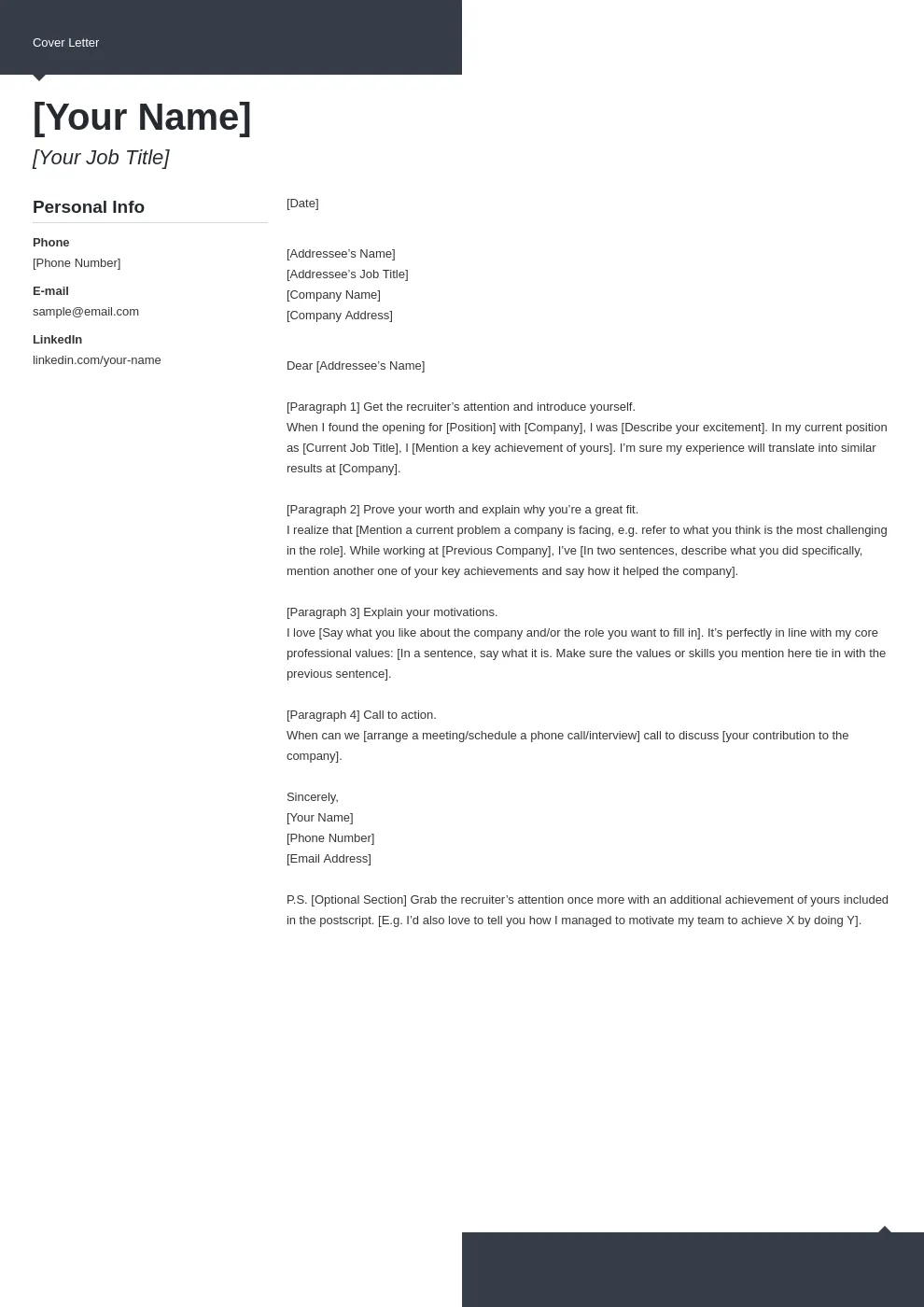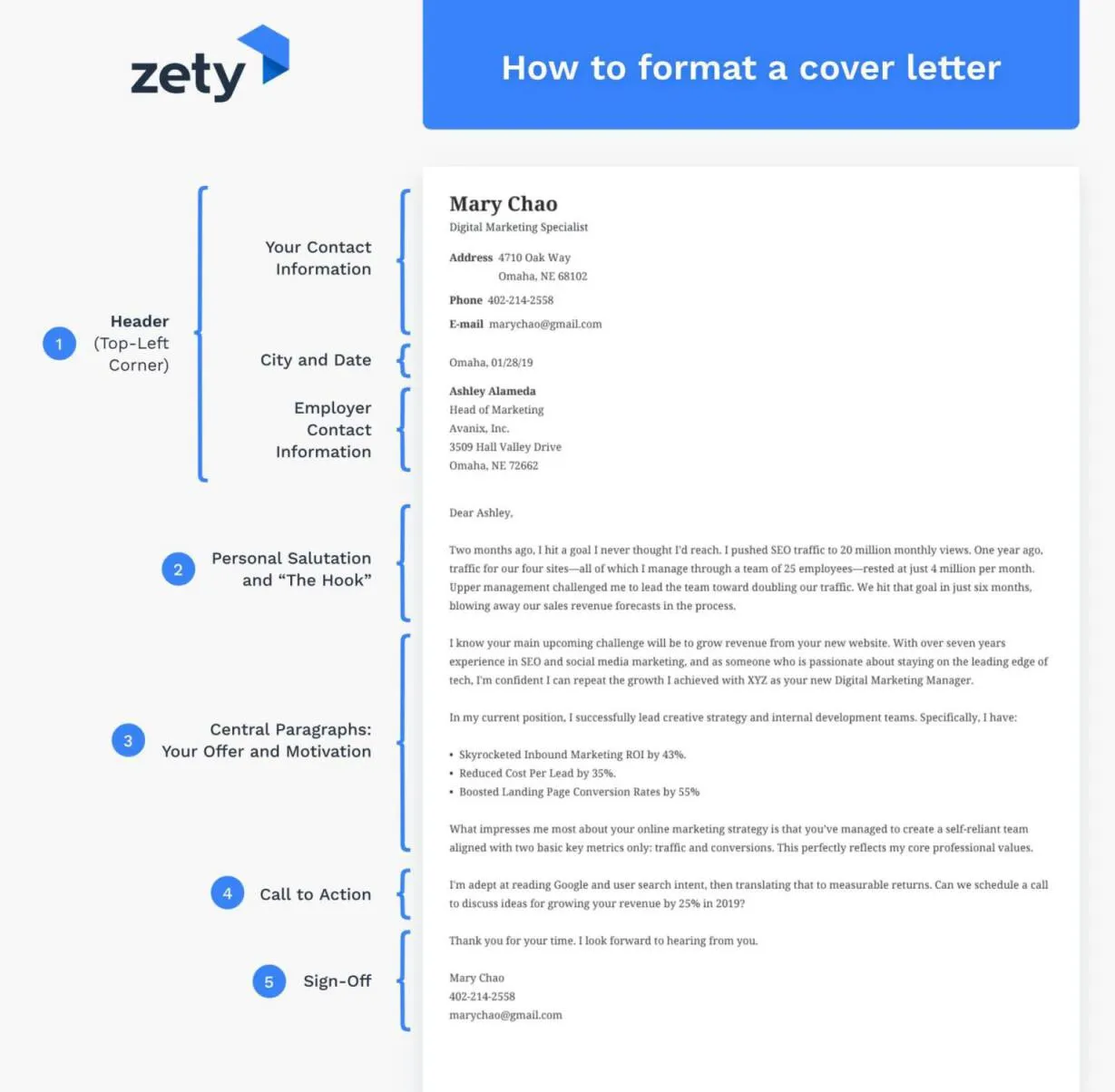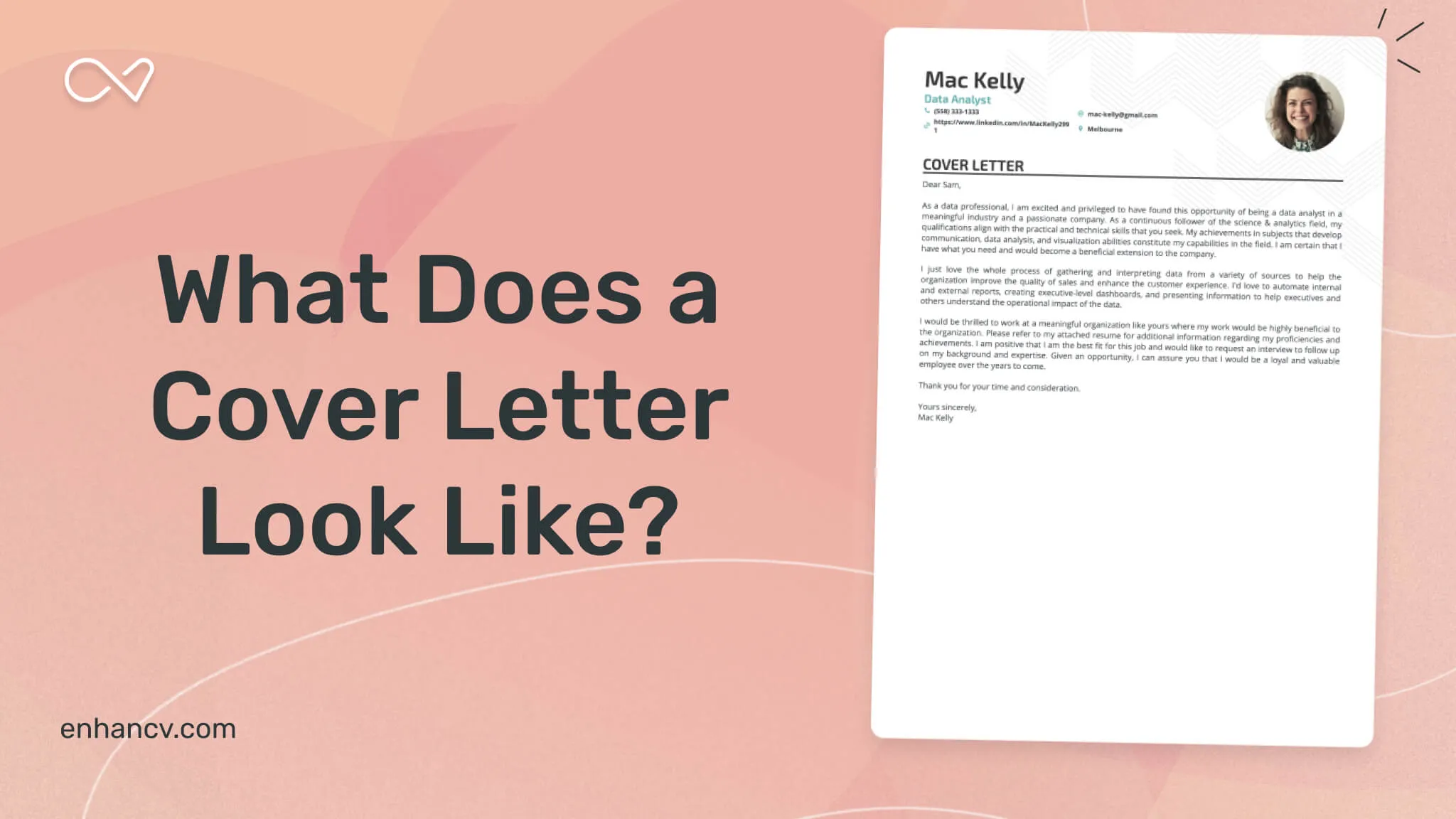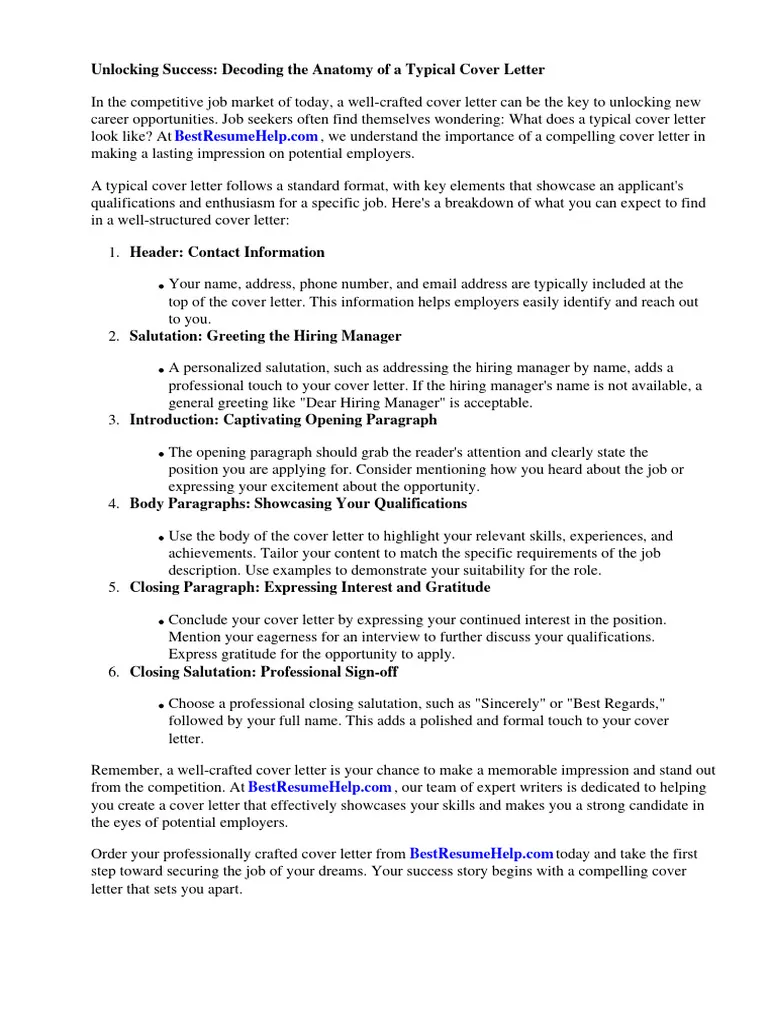What is a Cover Letter
A cover letter is a crucial document accompanying your resume when applying for a job. It serves as a personal introduction, allowing you to express your interest in the position and highlight your relevant skills and experience. Unlike a resume, which provides a concise summary of your qualifications, a cover letter gives you the opportunity to elaborate on your accomplishments and explain why you are the ideal candidate for the role. A well-crafted cover letter can significantly increase your chances of getting noticed by a hiring manager and securing an interview. It’s your chance to make a strong first impression and showcase your personality, enthusiasm, and unique value proposition. Always remember to tailor your cover letter to the specific job and company you are applying for.
Key Components of a Cover Letter
A good cover letter is structured to create a cohesive narrative. The format may seem simple, but each element plays a vital role in conveying your message. Knowing the components will help you navigate each step and ensure you do not miss anything. Let’s explore the key sections and tips to create a cover letter.
Contact Information

At the top of your cover letter, include your contact information, such as your name, address, phone number, and email address. This ensures that the hiring manager can easily reach you if they are interested in your application. Ensure that the contact information is accurate and up-to-date. Professional email addresses are important, avoid using informal or unprofessional addresses. Make sure your contact information is easily visible.
Greeting
Address the hiring manager or the specific person mentioned in the job posting, if possible. Use a formal greeting, such as “Dear Mr./Ms. [Last Name].” If the name of the hiring manager isn’t available, you can use a general greeting like “Dear Hiring Manager.” Addressing your letter to a specific person makes it more personal and shows you’ve taken the time to research the company and the role. Avoid using generic greetings like “To Whom It May Concern.”
Body Paragraphs
The body paragraphs are the core of your cover letter, where you highlight your skills, experience, and qualifications. Start with a strong opening paragraph that expresses your interest in the position and mentions where you found the job posting. In the subsequent paragraphs, provide specific examples of your accomplishments and explain how your skills align with the job requirements. Tailor your examples to the job description, emphasizing the most relevant skills and experiences. Quantify your achievements whenever possible to demonstrate the impact you’ve made in previous roles. Remember to keep the tone of your letter professional and enthusiastic.
Closing

End your cover letter with a strong closing paragraph. Reiterate your interest in the position and express your eagerness to discuss your qualifications further in an interview. Include a call to action, such as “I look forward to hearing from you soon.” Thank the hiring manager for their time and consideration. Close the letter with a professional closing, such as “Sincerely” or “Best regards,” followed by your full name.
Why Cover Letters Matter
In today’s competitive job market, a cover letter is a powerful tool for making a positive impression on a hiring manager. It is an opportunity to expand on your qualifications, which allows you to distinguish yourself from other applicants. A well-written cover letter can help you highlight your personality, passion for the role, and unique value proposition. In many cases, a cover letter is required, and failing to submit one might mean you are automatically disqualified. Showing you have an interest is a way to prove you are a candidate for a role. By showing your ability to communicate and write effectively, the cover letter shows the employer you can fill the role with ease.
Tips for Writing a Compelling Cover Letter
Writing a cover letter can be challenging, but with the right approach, you can create a document that impresses hiring managers and secures you an interview. Here are some key tips to help you craft a compelling cover letter and increase your chances of getting hired. Always be professional and specific for the role you are seeking.
Focus on the Job Description

Carefully read the job description and identify the key skills, qualifications, and requirements that the employer is seeking. Tailor your cover letter to directly address these requirements. Use the same keywords and phrases from the job description to show the hiring manager that you understand the role and have the necessary skills. Provide specific examples from your previous experiences to demonstrate how you have successfully applied these skills and achieved results. This targeted approach shows that you are a good fit for the position and can contribute to the company’s success. Never submit a generic cover letter.
Highlight Relevant Skills and Experience
In your cover letter, focus on the skills and experiences most relevant to the job you’re applying for. Choose your experience by highlighting specific accomplishments and results, whenever possible. Quantify your achievements with data and statistics to demonstrate the impact you’ve made in previous roles. For example, mention how you increased sales by a certain percentage, improved customer satisfaction scores, or streamlined a process to save time and resources. By providing concrete examples and quantifying your accomplishments, you can effectively showcase your value to the potential employer and increase your chances of securing an interview. Always include hard skills and soft skills.
Showcase Your Personality and Enthusiasm
A cover letter is your opportunity to showcase your personality and express your enthusiasm for the position and the company. Use a professional yet engaging tone to demonstrate your interest in the role and your passion for the field. Share your excitement about the company’s mission, values, or recent projects. Explain why you are drawn to the company and how you believe your skills and experience align with its goals. This genuine enthusiasm can make you stand out from other candidates and leave a lasting impression on the hiring manager. Let your personality shine through your writing style, but always remain professional. Hiring managers are looking for candidates who will fit well within their team.
Proofread and Edit Carefully

Before submitting your cover letter, carefully proofread and edit it for any errors in grammar, spelling, and punctuation. Typos and grammatical errors can reflect poorly on your attention to detail and professionalism. Read your cover letter multiple times, and consider asking a friend or colleague to review it as well. Ensure that your letter is clear, concise, and easy to read. Check that your contact information is correct and the formatting is consistent throughout the document. A polished and error-free cover letter demonstrates your commitment to quality and increases your chances of making a positive impression on the hiring manager. Never overlook this step; make sure your cover letter looks professional.
Formatting and Design Tips
The formatting and design of your cover letter can significantly impact its readability and overall appearance. A well-formatted cover letter is easier to read and demonstrates your attention to detail. These simple tips can make a great impression on any employer.
Font Choice
Choose a professional and easy-to-read font for your cover letter. Some popular choices include Arial, Calibri, Times New Roman, and Helvetica. Stick to a font size between 10 and 12 points to ensure readability. Avoid using overly decorative or unusual fonts, as they can be distracting and make your cover letter look less professional. Consistency in font choice throughout the document is essential. Ensure that the font size and style are consistent throughout, and use bolding, italics, and underlining sparingly to highlight key information.
Spacing and Layout

Use a clean and organized layout to make your cover letter visually appealing. Use single or 1.15 line spacing, and add a blank line between paragraphs. Maintain consistent margins (typically 1 inch on all sides) to create a balanced appearance. Use bullet points to highlight key skills, accomplishments, and experiences. This helps to break up large blocks of text and make your letter easier to scan. By using a well-structured layout, you can make your cover letter more visually appealing and easier for the hiring manager to read and understand. Always make sure your contact information is in an easy to read and accessible spot.
Cover Letter Examples
Reviewing cover letter examples can provide valuable insight into how to structure and write an effective cover letter. Many online resources offer a variety of cover letter templates and examples for different industries and job types. Use these examples to gain inspiration and adapt them to your specific needs and qualifications. Pay attention to the tone, language, and formatting used in these examples, and tailor your cover letter to match the style and requirements of the job you are applying for. Remember that while templates can be helpful, it’s essential to customize your cover letter to reflect your unique skills, experiences, and personality. Always try to make it look as unique as possible. Research the company and try to get the tone of the cover letter on par with their mission.
